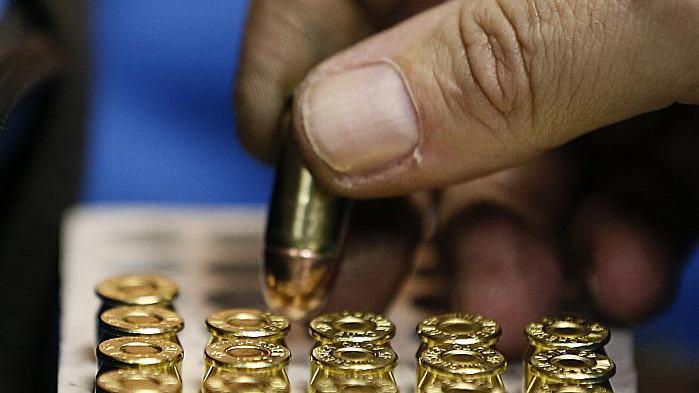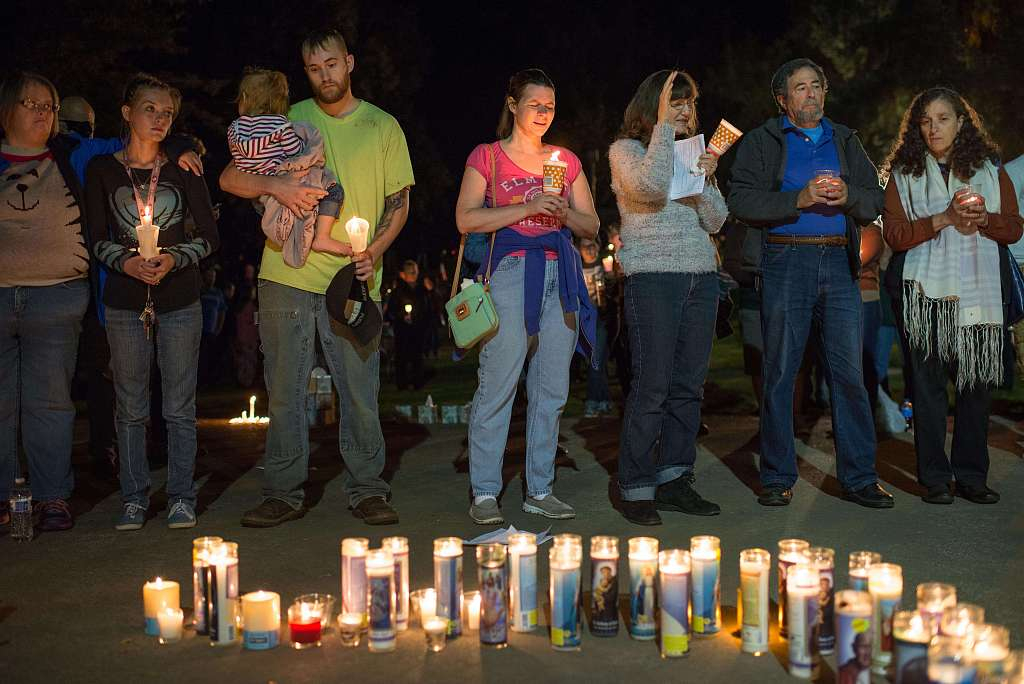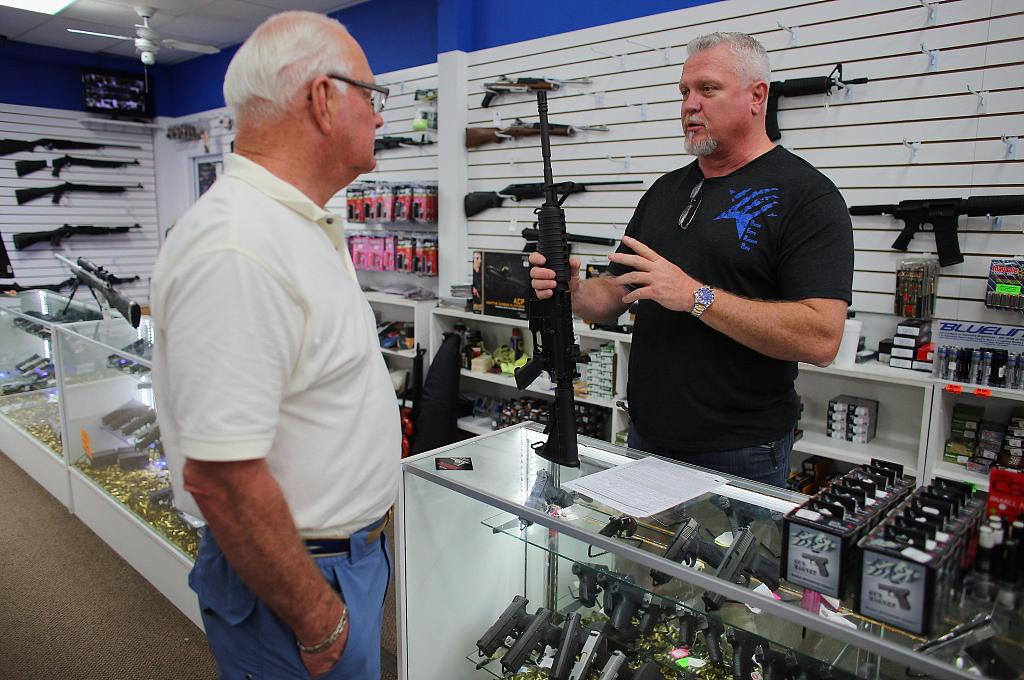
Opinion
10:35, 07-Jun-2019
Are U.S. laws to blame for gun violence?
Aaron Zou

Editor's note: Aaron Zou is a California-based Ph.D. student specializing in media and cultural studies. The article reflects the author's views, and not necessarily those of CGTN.
The Virginia Beach shooting on May 31 has triggered discussion on an enduring issue in the United States, gun violence. The tragedy happened not long before the 5th American Gun Violence Awareness Day – June 7-9, 2019. Gun control advocates would honor victims and survivors of gun violence on this day by donning orange as an act of solidarity.
The number of mass shooting incidents continues to rise this year in the United States. In 2018, a total of 340 mass shooting incidents occurred across the country, and 346 incidents in 2017. The United States is one of the most widely known cases of more than 20 countries that legalize gun ownership. An independent research project called Small Arms Survey reported in 2018 that of over one billion small arms distributed globally, 857 million (or 85 percent) are in the hands of civilians; U.S. civilians account for 393 million (or 46 percent) of the total civilian-held arms worldwide.

People pray during a candlelight vigil for ten people killed and seven others wounded in a shooting at a community college in the western U.S. state of Oregon in Roseburg, Oregon, October 1, 2015. /VCG Photo
People pray during a candlelight vigil for ten people killed and seven others wounded in a shooting at a community college in the western U.S. state of Oregon in Roseburg, Oregon, October 1, 2015. /VCG Photo
A large number of civilian-held firearms, along with the increasing incidents of mass shootings, points to a heatedly debated question: why is gun control so hard to achieve in the United States? New Zealand, for instance, lends itself as a sharp contrast to the U.S. case. After a mass shooting incident in New Zealand that took place in March, Prime Minister Jacinda Ardern swiftly called for bans on semiautomatic guns and assault rifles. However, in America, gun control not only remains largely at the discretion of individual states, but has also long been a persistent issue of debate rooted in the country's cultural history and divided largely by ideological lines.
The roots and views of gun ownership in the U.S.
Private ownership of guns has a long history in the United States. Back in the colonial era, when early British settlers set foot on the new continent, they used guns as tools of colonist control over indigenous Americans. As the settlers took control of the land and began to strive for independence from the British Empire, guns became their weapons against British control.
Since the founding of the U.S., gun ownership has been instituted as a basic individual right protected by the Constitution. The Second Amendment reads: “A well regulated Militia, being necessary to the security of a free State, the right of the people to keep and bear Arms, shall not be infringed.” The right to bear firearms is rooted in the Americans' demand for self-protection against others and their government. According to a 2017 Pew Research report on gun ownership in America, 67 percent of gun owners in this survey cited protection as a major reason for owning guns. Sports shooting and hunting are also common reasons people cited.
Americans have quite divided views on the issue of gun ownership and control. Many respondents in the report expressed that the right to own guns was either somewhat or very important to their overall identity; that said, in general, half of all U.S adults believe gun violence is a huge problem. According to Pew Research Center's 2017 survey, among 51 percent of the 1,501 adults said it was more important to control gun ownership whereas 47 percent said protecting the right to own guns is more important.
Besides, Republicans and Democrats are largely divided over the importance of protecting the right to own guns. In the Pew Research survey, 76 percent of Republicans and Republican leaners said protecting gun rights was more important, compared with 22 percent of Democrats and Democratic leaners. Besides, 52 percent of Americans said gun laws should be stricter than they are today. Then, why are gun laws in the U.S. not as strict as many would expect? And are the gun laws to blame for the rise in gun violence?
Are laws and regulations to blame for increasing gun violence?
When it comes to the laws and regulations about gun control, the National Rifle Association (NRA) is one of the most influential interest groups that has five million members and spends heavily on lobbying. The NRA opposes most proposals to strengthen gun regulations. According to a BBC report, in 2016, the association spent 4 million U.S. dollars on lobbying and direct contributions to politicians and over 50 million U.S. dollars on political advocacy.

An American buys guns at a gun store in Pompano Beach, Florida, USA, January 16, 2013. /VCG Photo
An American buys guns at a gun store in Pompano Beach, Florida, USA, January 16, 2013. /VCG Photo
Moreover, the NRA's annual budget is about 250 million U.S. dollars, which is allocated to legal advocacy efforts, education programs, membership events, sponsorships and gun facilities, etc. The NRA is part of a larger military-industrial complex in the U.S. where political and commercial interests are intricately intertwined. Nonetheless, gun control groups have also become more organized and robust in recent years, which is likely to constitute a challenge to the NRA.
Besides influential interest groups such as the NRA, another important hurdle to centralized gun control is that different states' gun regulations vary. The state-level legislation relating to guns is independent of Federal firearms laws. The firearms laws in some states can be less restrictive than federal laws. Although individuals are not exempt from federal laws, in many cases, local law enforcement still has the discretion to determine whether they will enforce federal laws. Considering that different states take different approaches to gun control, the Senate where the ideological divide is played out on the state level becomes a site of contestation.
All that being said, U.S. gun laws are not solely to blame for increased gun violence. There are certainly other factors that lead to the problem both at the individual level and the societal level, factors such as mental illness, family instability, pent-up social tensions, lack of economic opportunities for some groups and the proliferation of gun-related media content, etc. Many of the shooters were either suffering from mental issues or caught up in some social conflicts. Besides, given the fact the shooters are predominantly men, some of the shooting incidents could also be viewed as partly the result of a latent masculinity crisis, where gun violence is falsely associated with masculine behavior.
In general, it is simplistic to blame the gun laws and regulations in the U.S. for the increasing incidents of gun violence. There are a number of political, economic, social and cultural factors that together lead to the problem. The Gun Violence Awareness Day provides an occasion for people to ponder this complicated issue, to call for more attention to the existing challenges and to step up efforts to grapple with them.
(If you want to contribute and have specific expertise, please contact us at opinions@cgtn.com.)

SITEMAP
Copyright © 2018 CGTN. Beijing ICP prepared NO.16065310-3
Copyright © 2018 CGTN. Beijing ICP prepared NO.16065310-3